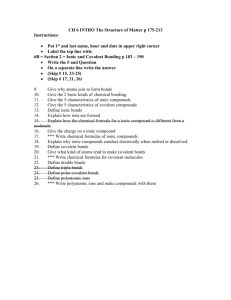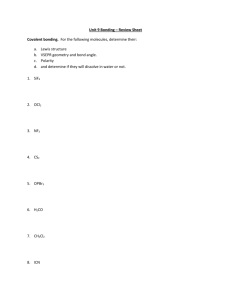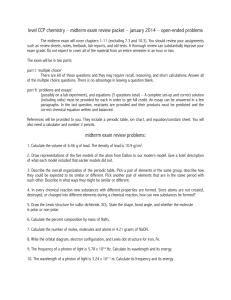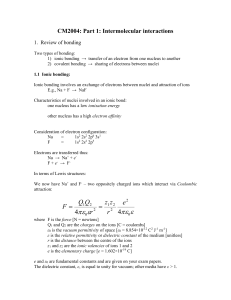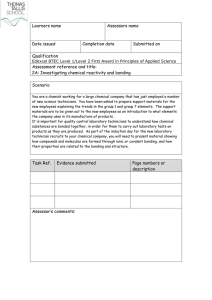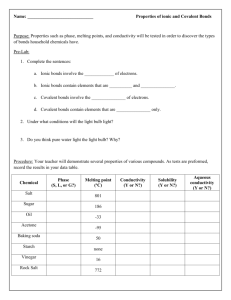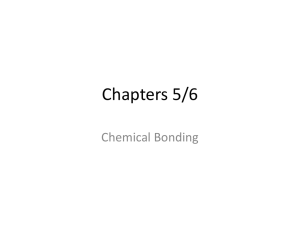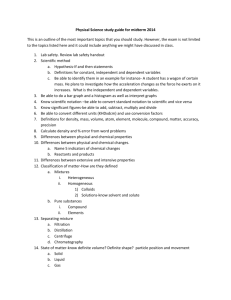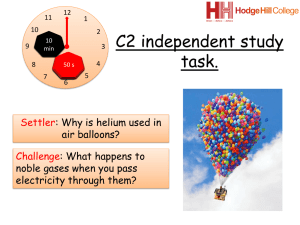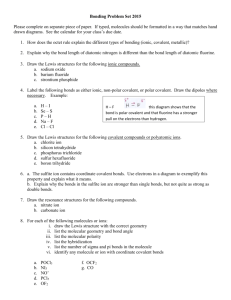9 th Grade Chemistry Unit 3 Objectives
advertisement
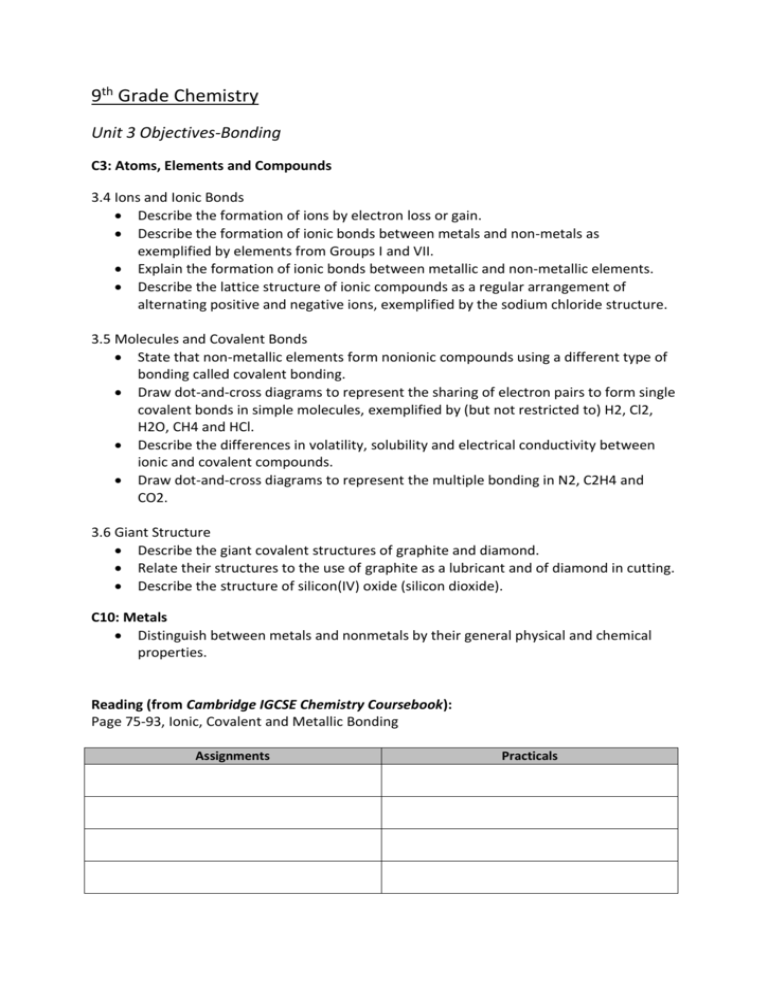
9th Grade Chemistry Unit 3 Objectives-Bonding C3: Atoms, Elements and Compounds 3.4 Ions and Ionic Bonds Describe the formation of ions by electron loss or gain. Describe the formation of ionic bonds between metals and non-metals as exemplified by elements from Groups I and VII. Explain the formation of ionic bonds between metallic and non-metallic elements. Describe the lattice structure of ionic compounds as a regular arrangement of alternating positive and negative ions, exemplified by the sodium chloride structure. 3.5 Molecules and Covalent Bonds State that non-metallic elements form nonionic compounds using a different type of bonding called covalent bonding. Draw dot-and-cross diagrams to represent the sharing of electron pairs to form single covalent bonds in simple molecules, exemplified by (but not restricted to) H2, Cl2, H2O, CH4 and HCl. Describe the differences in volatility, solubility and electrical conductivity between ionic and covalent compounds. Draw dot-and-cross diagrams to represent the multiple bonding in N2, C2H4 and CO2. 3.6 Giant Structure Describe the giant covalent structures of graphite and diamond. Relate their structures to the use of graphite as a lubricant and of diamond in cutting. Describe the structure of silicon(IV) oxide (silicon dioxide). C10: Metals Distinguish between metals and nonmetals by their general physical and chemical properties. Reading (from Cambridge IGCSE Chemistry Coursebook): Page 75-93, Ionic, Covalent and Metallic Bonding Assignments Practicals

